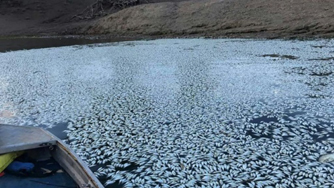SYDNEY, Jan 29, 2019 (BSS/AFP) – “Hundreds of thousands” of fish have died
in drought-stricken Australia in the last few days and more mass deaths are
likely to occur, the authorities warned Tuesday.
Locals around the Darling River were confronted with a sea of white, as
dead fish carpeted the waters near the southeastern Outback town of Menindee.
Just weeks after up to a million were killed — with scientists pointing to
low water and oxygen levels as well as possibly toxic algae — another mass
death occurred in the key food growing region.
Inspectors from the New South Wales Department of Primary Industries have
visited the site and said they found that “hundreds of thousands of fish have
died”.
“Further fish deaths in the Darling River are anticipated as a significant
number of fish have been observed under stress,” the department said in a
statement.
The Darling River is part of the Murray-Darling River system that stretches
thousands of kilometres across several states.
With temperatures expected to rise and no rain forecast, there remained a
“high risk of further fish kills over the coming days and week,” officials
said.
While the federal government has blamed the deaths on a severe drought,
experts and locals say they stem from the systemic depletion and pollution of
the river.
The inspectors added that the latest bout of kills were likely linked to
“critically low levels of dissolved oxygen” caused by a sharp drop in
temperatures after an extended period of hot weather.
New South Wales Regional Water Minister Niall Blair, who visited Menindee
Tuesday, told national broadcaster ABC his government was out of options,
with installing aerators in rivers only a “band-aid solution”.
“It’s not a case of not being able to spend money on something, there just
isn’t any other alternative that anyone has offered up,” Blair said.
“The only thing that will really change these conditions at the moment is
fresh water coming through the system and there is just no possibility of
that at the moment.”
Australia’s eastern inland regions have been hit by a prolonged drought,
with extreme heatwaves in recent weeks exacerbating conditions.
The late arrival of the monsoon season in northern Australia has also
contributed to heatwaves in some regions.
The wet season eventually kicked off in mid-January, with record-breaking
floods hitting the tropical top end of the vast continent, cutting
communities off and stranding farmers in recent days.
Queensland’s major Daintree River rose to 12.60 metres (41 feet) — a level
not seen in over a century — over the weekend.



